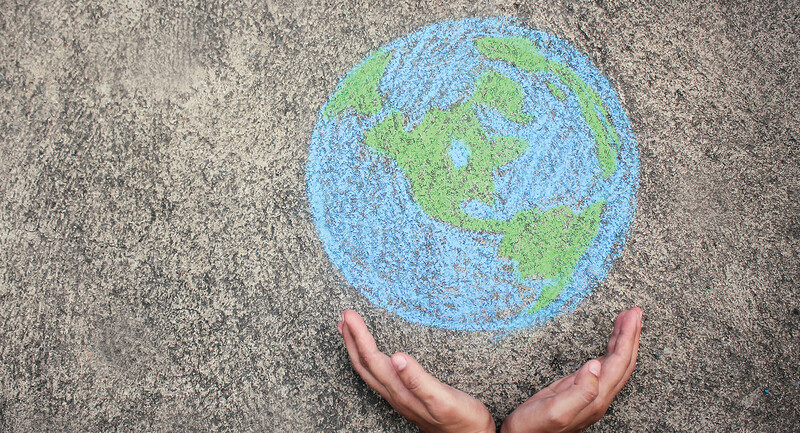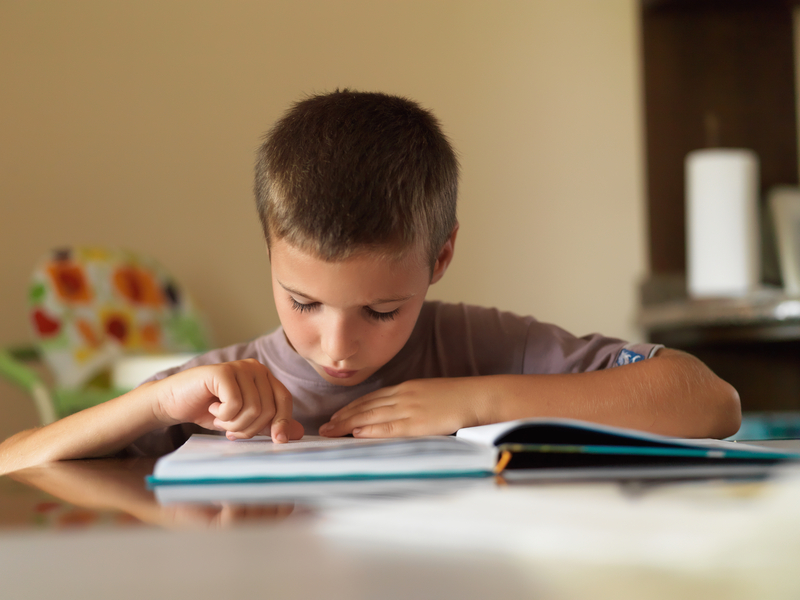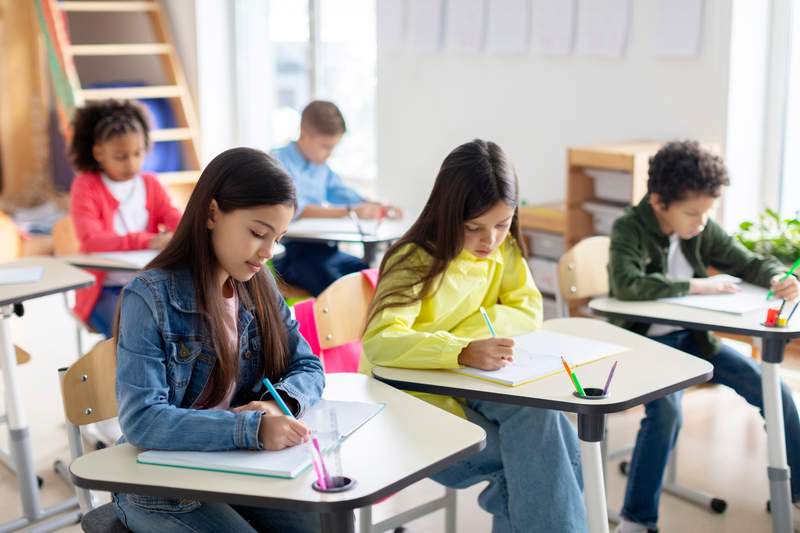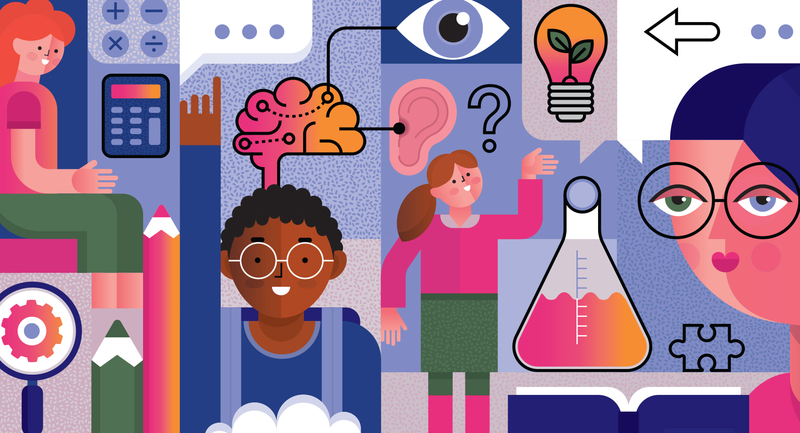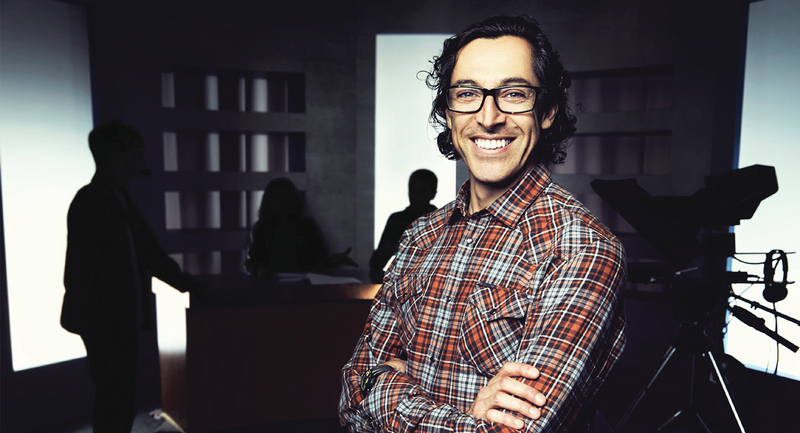Climate change is a pressing environmental and social justice issue. Fortunately, more and more young people are leading the effort to address climate change in promising and inspiring ways. Unfortunately, the U.S. education system isn't always keeping pace with students' interest in responding to this high-stakes problem.
A 2019 poll found that while most teachers believe climate change should be taught in school, more than half of them don't cover it with students, the majority of them citing the belief that it wasn't related to the subjects they teach (Kamenetz, 2019). However, even middle and high school science teachers who do address climate change devote only an average of 0–2 hours per school year to this topic, according to the National Center for Science Education (Plutzer et al., 2016).
But simply increasing the number of hours devoted to climate change and the social challenges accompanying it wouldn't be enough. Traditional environmental education efforts tend to focus on teaching students about climate change—a passive approach that fails to capitalize on students' capacity to make a meaningful impact in their communities now while inspiring their commitment to future environmental work.
Many mission-based groups and thought leaders are now calling for "transformative" approaches to environmental education—approaches that are project-based, relevant to students' lives, and equity-oriented. For instance, OECD's Think Green: Education and Climate Change report identifies experiential and project-based learning (PBL) as "areas of action … key to supporting climate change mitigation and adaptation across all levels of education" (2021, p. 5). Amid such calls, PBL has emerged as a promising way to support students to explore and confront climate-related questions within their communities.
Despite this push, many educators feel unprepared to explore climate change in ways that treat students as something other than spectators. Furthermore, educators can struggle with knowing how to support students to grapple with the critical justice dimension of the topic.
Educators learned about issues of global climate justice and engaged in a workshop where they designed projects for their schools and communities.
To help teachers get started, our team at the Penn Graduate School of Education Center for Professional Learning is partnering with educators across the globe to create transformative learning experiences tied to climate justice. In August 2022, we launched a professional learning program, called Project-Based Learning for Global Climate Justice, that virtually convened over 100 educators from 20 countries. These educators learned about issues of global climate justice and engaged in a workshop where they designed projects for their schools and communities. Throughout the fall, many of these educators convened in virtual small groups we facilitate to support each other as they implemented projects with their students. Through this program, educators are demonstrating how to do this challenging work well and how impactful it can be.
Five Promising Strategies
The PBL for Global Climate Justice program has helped us identify challenges and opportunities related to project-based learning focused on issues of climate justice. Our team has found that five practices help teachers do climate-connected PBL effectively.
1. Ask Authentic Questions
At its best, project-based learning engages students in conducting rigorous disciplinary inquiry focused on real questions and on building solutions to problems in service of actual communities. In other words, a central goal of project-based learning should be authenticity (Grossman et al., 2021). An authentic question is one that is relevant to students and their communities. For example, in the Philippines—the island country most at risk from the climate crisis—one conservation educator involved with PBL for Global Climate Justice, Grace Quiton-Domingo, is asking students, "How does supporting local agriculture and protecting local water sources in coastal communities help prepare us for extreme weather events?" In China, as discarded disposable face masks pile up across the country (Jiangtao & Zheng, 2020), teacher Jinsong Li is having students investigate what happens when a face mask is discarded and how masks might be recycled instead. And Pennsylvania teacher Karen Shaffran challenges students to ask, "How do our consumer clothing choices impact the planet?"
Authentic questions like these can also come from students themselves. Teachers might hook students with an intriguing artifact or experience, such as a newspaper article, field trip, demonstration, or data set, and have them generate questions based on their own curiosities. For instance, a teacher in Los Angeles might bring their students to a reservoir to see the reservoir filled with "shade balls" (plastic balls floated atop reservoirs to slow evaporation and for other environmental purposes). This teacher might support students in brainstorming questions that could be the springboard for a project, such as, "What are these things?" "Do shade balls work in protecting local water supplies?" and "What interventions has the local government used to conserve water in the past?"
2. Establish Learning Goals Focused on Justice
Because it lets students explore real, complex, and relevant topics, PBL can be a particularly powerful approach to exploring issues of justice. To center the social justice dimension of projects, critical goals can be built into the driving question itself. For example, if students are going to learn about air quality, they could explore the question, "How are differences in air quality across our city related to the socioeconomic status of different neighborhoods and their residents?"
Gholdy Muhammad's HILL (History, Identity, Literacy, Liberation) framework (2018) can also be a useful guide in this process. Muhammad argues that true competence and equity can only be achieved when educators are intentional about planning for the development of students' identity and criticality as well as the development of knowledge and skills. In our PBL for Global Climate Justice program, we encourage educators to consider four components when planning for any learning experience or project. Drawing on Muhammad's framework, teachers ask themselves about the following:
Skills: What relevant competencies, abilities, and proficiencies will students learn through this project?
Intellect: What concepts, topics, and ideals will students learn through this project?
Identity: How will this project help students explore who they are and who others are?
Criticality: How will this project help students explore and understand issues of power, equity, anti-racism, and anti-oppression?
For example, for students to see the importance of supporting local agriculture and protecting local water sources in the Philippines, Quiton-Domingo wanted students to develop skills of research and collaboration, knowledge of the health risks arising around extreme weather events, and a sense of their identity or personal role in protecting their environment and community. She also wanted them to gain critical understanding of the motives behind the emergency assistance large businesses often provide after extreme weather events (and how inappropriate assistance sometimes compromises the health and resilience of already vulnerable communities).
3. Adopt Real-World Roles and Do Real-World Problem-Solving
Authenticity in PBL can also include supporting students to take on authentic roles (Pupik Dean & Herrmann, 2022). This could mean students take on the role of a scientist in a science class, a historian in a history class, a political activist in a civics class, an artist in an art class, etc. Teachers shouldn't jettison rigorous disciplinary practices (for example, what it means to do science, math, or history) and content knowledge when they're doing project-based learning. Quite the contrary, they must integrate rigorous disciplinary learning into project-based learning.
A common misconception among teachers is that certain real-world problems are confined to specific disciplines. We frequently hear from STEM educators that they can't find ways to integrate social justice issues into their curriculum because they don't teach humanities—and humanities educators say they can't explore climate change because they don't teach science. In reality, complex problems like global climate justice transcend individual disciplines.
Every discipline has an entry point into the issue of climate justice. Consider the driving question, "How are differences in air quality across our city related to the socioeconomic status of different neighborhoods and their residents?" How might the tools and practices of a scientist be used to explore this question? How would a mathematician investigate this question—or a historian? Each discipline brings a unique set of approaches and offers students a new lens and set of strategies to work through problems.
By the same token, it can be hard to imagine what PBL might look like in our subject areas when we have narrow or limited conceptions about our disciplines. Supporting students to take on authentic disciplinary roles requires us to understand what it truly means to do authentic work within our disciplines. When we don't have a deep understanding ourselves, the projects we implement with our students can run into trouble. For example, if a teacher wants students to explore air quality in their city through a scientific approach but doesn't have the expertise to help students use sound, rigorous scientific practices in their investigation, students may not only arrive at inaccurate results, they may also develop problematic scientific understandings or methods. If students are exploring a topic through a historical lens but aren't supported to develop the skills to assess sources and corroborate claims, they may arrive at dubious conclusions—and internalize sloppy inquiry practices. This makes ongoing professional learning for teachers, as well as enlisting partners and collaborators, critical.
When students take on authentic roles, they're empowered to explore real questions in real ways. In exploring the issue of face mask waste, Li had his students take on the role of journalists, interviewing local residents and waste management companies to better understand the severity of mask pollution in their community. And Shaffran's learners in Pennsylvania acted as fashion designers and eco-entrepreneurs after they explored the environmental consequences of "fast fashion." They created fashion looks using textiles bought from thrift shops or donated, while working with several Philadelphia-area artists to learn sewing, stamp printing, and other fabrication techniques. In exploring questions around water conservation in Los Angeles, students might act as scientists investigating the efficacy of shade balls, or as historians digging into past water conservation efforts in the city.
4. Support Students to Take Action
Whereas traditional environmental education helps students learn about environmental issues but doesn't necessarily ask them to actively respond to them, effective project-based learning supports students in creating products that truly affect a real audience or group. Impact and audience should be tightly connected with the project's driving question. Educators and students might ask themselves: Who is most impacted by, or implicated in, this problem? What would authentic engagement with this audience look like?
For instance, since coastal communities in the Philippines are the most affected by extreme weather events like typhoons, Quiton-Domingo plans to culminate her project by having students organize a farmers' market promoting local products that could replace the emergency-aid food items coastal areas often receive after a typhoon. Shaffran's students staged a fashion show to showcase their upcycled garments to fellow high schoolers and other community members.
When planning a project, consider how the various authentic elements will tie together. Teachers have found it helpful to use this template to sketch out a project idea:
"Students will explore ___ [question/problem]. They will take on the role of ___ [role], make personal connections by [actions that foster personal connections], and work to produce ___ [product] in service of ___ [audience and impact]. In doing so, they will learn ___ [project learning goals]." (Herrmann, 2021)
5. Support Teacher Learning and Development
Designing and implementing PBL focused on issues of climate justice requires teachers to understand the goals and practices of project-based learning, ways to support their students to engage in authentic disciplinary practices, and subject-matter content related to global climate justice. This is a tall order, and many of us won't know all we need to know right away. That's why it's critical for teachers to have access to effective professional learning and ongoing opportunities to collaborate, plan, and reflect with colleagues and partners.
Designing and enacting projects in partnership with other teachers and local experts can increase the authenticity of the project and serve as a powerful source of professional learning.
Teachers shouldn't have to be the sole source of expertise when it comes to planning a project. Educators can collaborate with colleagues and community members who have expertise in different disciplines and fields. If students are exploring truly authentic questions and problems, there are likely already people working on those same questions and problems within the community. Designing and enacting projects in partnership with other teachers and local experts can increase the authenticity of the project and serve as a powerful source of professional learning for teachers, too.
In our professional learning program at Penn GSE, we organize educators into small groups that meet virtually to discuss their work designing and carrying out projects. The teachers share problems of practice, brainstorm solutions, exchange sample assessments and recordings of their lessons, and celebrate each other's successes. Our participants tell us these groups are a helpful source of motivation and accountability as they work toward such ambitious teaching and learning goals.
For example, in one small group, several teachers expressed feeling concerned about time constraints and not being able to implement the projects they had designed. In addition to feeling validated that their colleagues were facing the same challenge, they helped each other consider how they might scale down their projects into more manageable time frames.
Aligning with Educators' Values
Taking a project-based learning approach to social justice issues is one way to create more meaningful, transformative educational experiences for students. We've seen that such experiences not only contribute to ameliorating world problems through the ideas and solutions students create, they also benefit students personally. Shaffran in Pennsylvania reported that "student feedback demonstrated a high level of pride and enjoyment in this project and identified specific areas for improvement and growth." Other educators reported increased student bonding as they worked on their projects, and a greater appreciation among students of the "interconnectedness of soil, humans and other living beings."
There's another less obvious benefit to this approach: It energizes educators. While many educators acknowledge the challenges of designing and implementing good PBL, they also point out how this approach better aligns with their values as educators. Quiton-Domingo shared that professional learning about PBL left her feeling "inspired and just energized to keep working." Other participants in the PBL for Global Climate Justice program reported feeling better (happier, more confident, less stressed), more connected to colleagues, and more engaged in and energized by their work.
Many educators want students to have rich learning experiences that allow them to explore issues of justice; when that happens, teachers feel more alive and inspired as educators. At a challenging time for the profession, when potential educators are deciding whether or not to become teachers, shouldn't we provide a vision for teaching that's inspiring for both students and teachers? Exploring social justice issues through project-based learning can be one powerful component of that vision.




